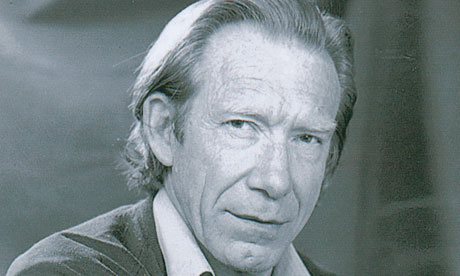
The film 633 Squadron (1964) is a classic among second world war movies, despite what many see as wooden acting from its leads, Cliff Robertson, George Chakiris and Maria Perschy. Frederick E Smith, who has died aged 93, wrote the book upon which it was based. He did not consider it to be among his best novels, but acknowledged that it was the one with which his name would always be associated.
In the 1956 novel, the (fictional) air squadron is sent to aid the efforts of the Norwegian resistance, originally flying Douglas Boston bombers before they are re-equipped with the Mosquitos that were to become a striking aspect of the film. The squadron undertakes a doomed mission to bomb a well-protected German hydro-electric plant at the head of a Norwegian fjord, the novel ending bleakly with the loss of all lives. The movie pulled that final punch, allowing Robertson's Wing Commander Roy Grant (Grenville in the novel) to survive.
The film was a huge hit, thanks to a stirring soundtrack by Ron Goodwin and authentic flying action scenes, shot in colour and in Panavision for the first time. The novel, reprinted by Corgi in paperback, went through 17 editions over the next 11 years before Smith was persuaded to write a sequel. Operation Rhine Maiden featured a new crew but followed much the same plot, with the squadron required to bomb a German rocket factory and then a factory hidden underground in a forest in the Ruhpolding valley. Later books in the series included Operation Crucible (1977), Operation Cobra (1981), Operation Thor (1994) and Operation Safeguard (2007).
Smith was born in Hull, east Yorkshire, the son of Harry Smith and his wife Elma (nee Escreet). He attended local schools and began working in local government. In 1940 he joined the RAF, serving in Britain, Africa and with South East Asia Command until 1946. He married Shelagh McGrath and returned briefly to his post with Hull city council before moving to Cape Town, where he worked as a cost accountant with Premier Steel Products. At the same time, he began writing short stories.
From the beginning, Smith researched his subjects thoroughly. He considered writing a novel based on apartheid and visited illegal drinking dens in black townships until his disguise was penetrated. The result, Laws Be Their Enemy, eventually appeared in 1955 to good reviews, but, because it condemned apartheid, Smith received death threats and the book was banned in South Africa until the 1990s.
Smith returned to Britain with his family in 1952, determined to make his living as a writer. His debut novel, Of Masks and Minds (1954) concerned medical experiments. An early story, The Devil Doll, about a ventriloquist and former hypnotist whose doll, Hugo, is kept in a cage, was optioned as a movie – released as Devil Doll in 1964. Smith, who had been paid £10 for all rights when the story was published in 1954 in London Mystery Magazine, did not see any further profit.
The book 633 Squadron was not immediately a success and Smith continued to experiment with his fiction, which ranged from the romantic Lydia Trendennis (1957) to the thriller The Devil Behind Me (1962), inspired by a trip to the Lapland wilderness where he found himself caught up in a murder hunt. He continued in this vein, with The Storm Knight (1966), a thriller set in Norway, and A Killing for the Hawks (1966), about a unit of the Royal Flying Corps before and during the battle of Ypres.
His later novels included the blackly satirical trilogy Saffron's War (1975), Saffron's Army (1977) and Saffron's Trials (1996), which was said to have been based in part on some of Smith's own exploits. In all he wrote some 40 novels, a number of them appearing under the pen-name David Farrell. He also published more than 80 short stories and travel articles.
In 1985, he tutored a course on novel writing at the Writers' Summer School at Swanwick, Derbyshire, and subsequently co-wrote and self-published Write a Successful Novel (1991). He recently wrote his autobiography, in three parts: A Youthful Absurdity (2010), An Author's Absurdities (2012) and The Final Absurdities, which is due for publication in November.
Shelagh predeceased him in 2006. He is survived by their two sons, Peter and Kevan, five grandchildren and two great-grandchildren.
• Frederick Escreet Smith, writer, born 4 April 1919; died 15 May 2012

